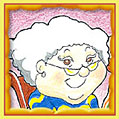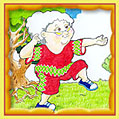Text types: Particular Descriptions
| Describing people and things |
Identifying and describing people and things using relating clauses
In particular descriptions, in both the IDENTIFICATION
and the DETAILS stages, we use clauses with relating
verbs ![]() .
These verbs are used in the present simple because we use
particular descriptions to describe the way things usually
are. In the IDENTIFICATION stage
of a particular description we
identify the topic. We
usually do this by using a relating verb to link the topic to its
introduction.
.
These verbs are used in the present simple because we use
particular descriptions to describe the way things usually
are. In the IDENTIFICATION stage
of a particular description we
identify the topic. We
usually do this by using a relating verb to link the topic to its
introduction.
In the examples below the relating verb be is used to identify the topic:
|
|||||||||||||||||
|
|

|

|
|||||||||||||||
In the DETAILS
stage of a particular description we describe the characteristics of the topic in more detail.
For example we can describe the following:
|
what the topic looks like |
|
|
what it is like |
|
|
what it possesses |
In the clauses below, the relating verb have links the topic with a description. Note that when we use the relating verb have, the descriptions are noun groups:
|
relating clause |
||
|
topic |
relating verb have |
description of the topic |
|
She |
has |
a cute little black nose and soft floppy ears. |
|
He |
has |
grey fur, pointy ears, big round eyes and a black shiny nose. |
|
She |
has |
wrinkles around her eyes. |
In the clauses below the relating verb be links the
topic with a description. Note that when we use the relating verb be, the
descriptions can be noun groups or adjective groups.
In these clauses the relating verb be links the topic to noun group descriptions of the topic:
 |
|
||||||||||||
In these clauses the relating verb be links the topic to
adjective group descriptions of the topic:
|
|||||||||||||||||||||

|

|
||||||||||||||||||||
Describing the way things are
When we describe the way things usually are, we typically use the present
simple ![]() .
.
My dog Tess is a beautiful little dog.
She has a cute little black nose and soft floppy ears.
Sometimes we want to write particular descriptions about people and things
from the past, eg to describe a person who lived long ago. In these types of particular
descriptions we use the past simple ![]() .
.
She was a very good person.
| To see how relating clauses are used in the particular description
My dog Tess, click here: |
 |
| To see how relating clauses are used
in the particular description Boris the Bat, click here: |
 |
| To see how relating clauses are used in the particular description Granny Gong, click here: | 
|
For more information see:
|
|
Grammar: Clause: Using the clause to represent experience: The processes: 'What's happening?': 'Naming and describing' |
| Grammar: Groups & phrases: Verb group: Time & tense: Present simple |
|
Tell me more ... Focus on Grammar |
|
||
To give us feedback about this section, click here or on the Comment button at the top of the screen.
If you have any questions about this section, visit the Language Corner.
If you have any questions or suggestions about how to teach this section, send a message to the Teaching Corner.